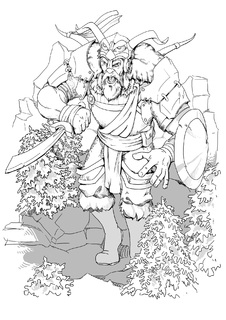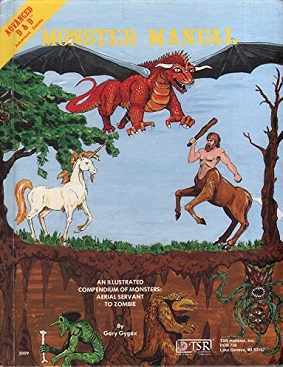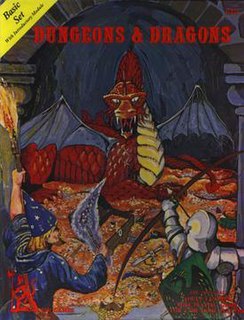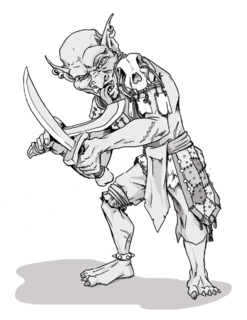
Trolls are fictional monsters in the Dungeons & Dragons roleplaying game.

In the Dungeons & Dragons fantasy role-playing game, ogres are a lesser race of giants. An aquatic subrace of ogres is known as "merrow". D&D ogres are also closely related to the race of ogre magi, a more intelligent race with blue skin and great magical abilities. Typically Ogres stand between nine and ten feet tall and can weigh up to 650 lbs. Ogres are closely related to trolls, and are distantly related to the various races of giants.
In Dungeons & Dragons, Fey is a category of creatures. The fey deities are associated with the Seelie Court and the Unseelie Court. Titania is the general fey deity, with individual races like the Killmoulis who worship Caoimhin. Fey are usually humanoid in form and generally have supernatural abilities and a connection to nature. The Sylph is one creature which has a Fey appearance, but is officially recognized as an outsider creature type.

In the Dungeons & Dragons fantasy role-playing game, the weretiger is a type of lycanthrope.

In the Dungeons & Dragons fantasy role-playing game, the manticore is a legendary creature with the body of a lion, dragon wings, and humanoid head. It is based on the mythological manticore.

In the Dungeons & Dragons fantasy role-playing game, giant is a type of creature based on giants of legend, or in third edition, a "creature type".

In the Dungeons & Dragons fantasy role-playing game, the zombie is an undead creature, usually created by applying a template to another creature.

In the Dungeons & Dragons fantasy roleplaying game, the skeleton is an undead creature. In the third edition of the game, a skeleton's statistics are usually created by applying a template to those of another creature.

In the Dungeons & Dragons fantasy role-playing game, the roc is a gargantuan, eagle-like animal, based on an earlier creature from myth and fantasy also named the Roc.

In the Dungeons & Dragons fantasy role-playing game, the stirge is a mosquito-like magical beast and a classic D&D monster.
In the Dungeons & Dragons fantasy role-playing game, a phase spider is a magical beast akin to a predatorial version of the ethereal filcher.

In the Dungeons & Dragons role-playing game, the tarrasque is a magical beast.

In the Dungeons & Dragons fantasy role-playing game, the ochre jelly is a type of ooze.

A treant is a fictional creature found in the Dungeons & Dragons roleplaying game.

In the Dungeons & Dragons fantasy role-playing game, the wererat is one of several different types of animalistic forms. They are classified as "lycanthropes", despite the fact that the term reflects a lupine, or wolven, form.

In the Dungeons & Dragons fantasy role-playing game, the werebear is a type of lycanthrope.

In the Dungeons & Dragons fantasy role-playing game, the djinni is a type of genie.
This is the Index of Advanced Dungeons & Dragons 1st edition monsters, an important element of that role-playing game. This list only includes monsters from official Advanced Dungeons & Dragons 1st Edition supplements published by TSR, Inc. or Wizards of the Coast, not licensed or unlicensed third party products such as video games or unlicensed Advanced Dungeons & Dragons 2nd Edition manuals.

In the Dungeons & Dragons fantasy role-playing game, the werewolf is a type of lycanthrope.
















